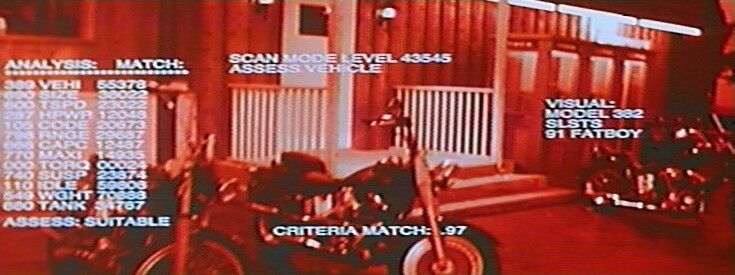The Eyes Are the Windows to the...Internet?
This may seem a little off the topic of neuroscience, but ultimately neuroscience is needed to explain perception, and anything related to vision is related to the brain (plus it was just too cool for me to ignore). Remember this scene?

It is from Terminator 2: Judgment Day, and is a snapshot of the Terminator robot’s (Arnold Schwarzenegger's) point of view. His/its visual display was complete with a targeting mechanism as well as an extensive database that was able to identify people and objects without having to make any movement or effort. Well, as is sometimes the case with science fiction, the movie may be a harbinger of technology to come, possibly within this generation. Engineers at the University of Washington are attempting to develop a contact lens with an imbedded electronic circuit that would superimpose a virtual display over the wearer’s normal visual representation. They have gotten as far as creating a flexible, safe lens with a circuit and light-emitting diodes incorporated into it, although the diodes do not yet light up.
The ability to put a circuit on a contact lens, however, is incredible in and of itself. Not only does it necessitate the creation of nanoid circuits, but it also involves embedding them in biologically safe materials that are flexible enough to fit on the eye. The circuits for the contact lenses created at UW are about one thousandth the width of a human hair. After being constructed they are spread on a sheet of flexible plastic. The pieces of the circuit can only fit together in one shape, and natural capillary action (the same force that draws water up plant tubules) brings the pieces together. This is an amazing manufacturing technique in nanotechnology known as self-assembly.
The display Arnold Schwarzenegger had in Terminator 2 is still quite a ways off. But according to a UW assistant professor of engineering, Babak Parviz, a basic display with a few pixels could be functional “fairly quickly”. Eventually, the team at UW hopes to create a contact lens that could easily be popped in or out, with wireless technology that would allow one to surf the internet without a screen in front of them. It sounds very cool, but also I imagine it would be a little eerie to walk into Starbucks and see a bunch of people staring off into space as they sip their mochas…


